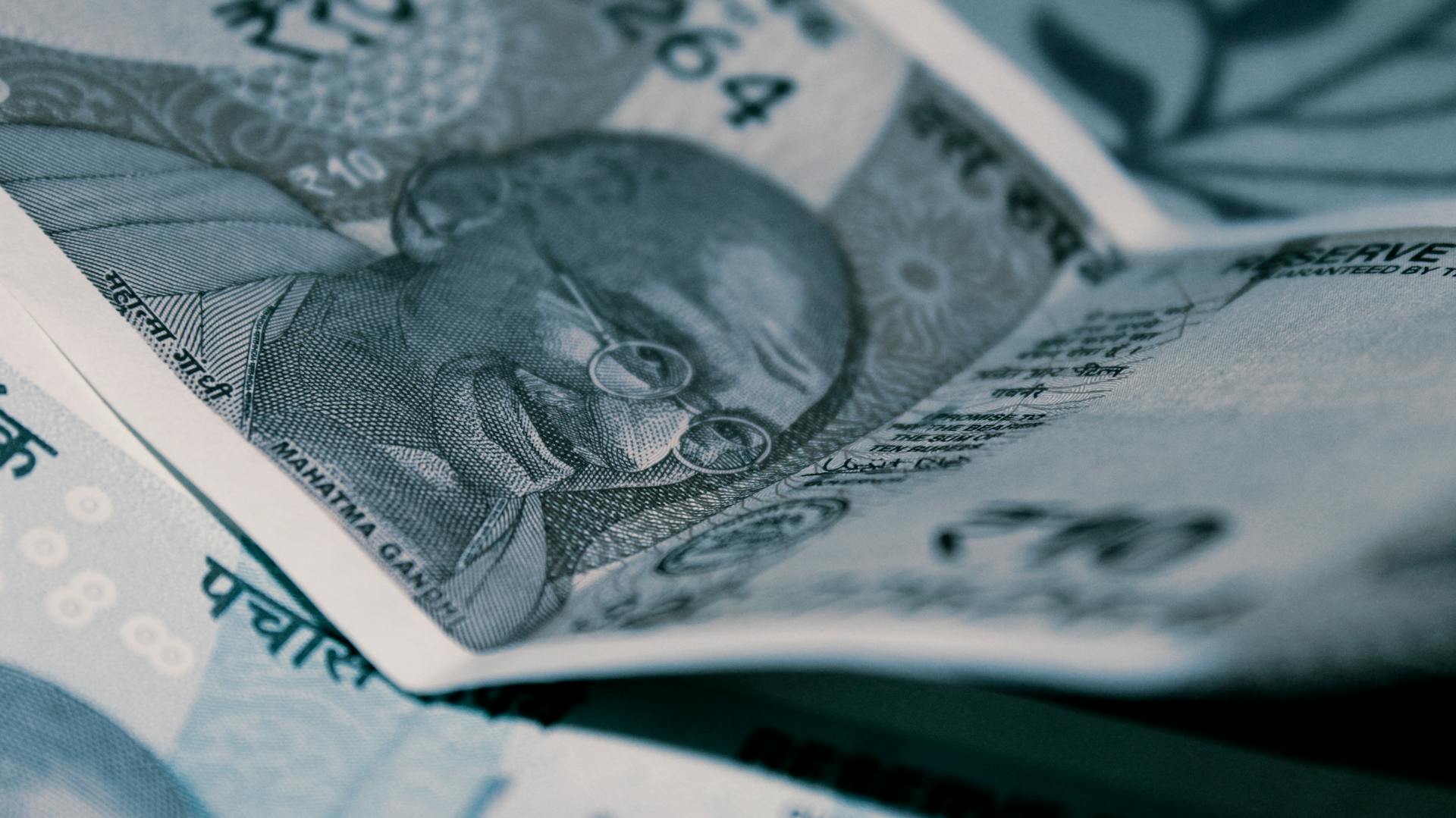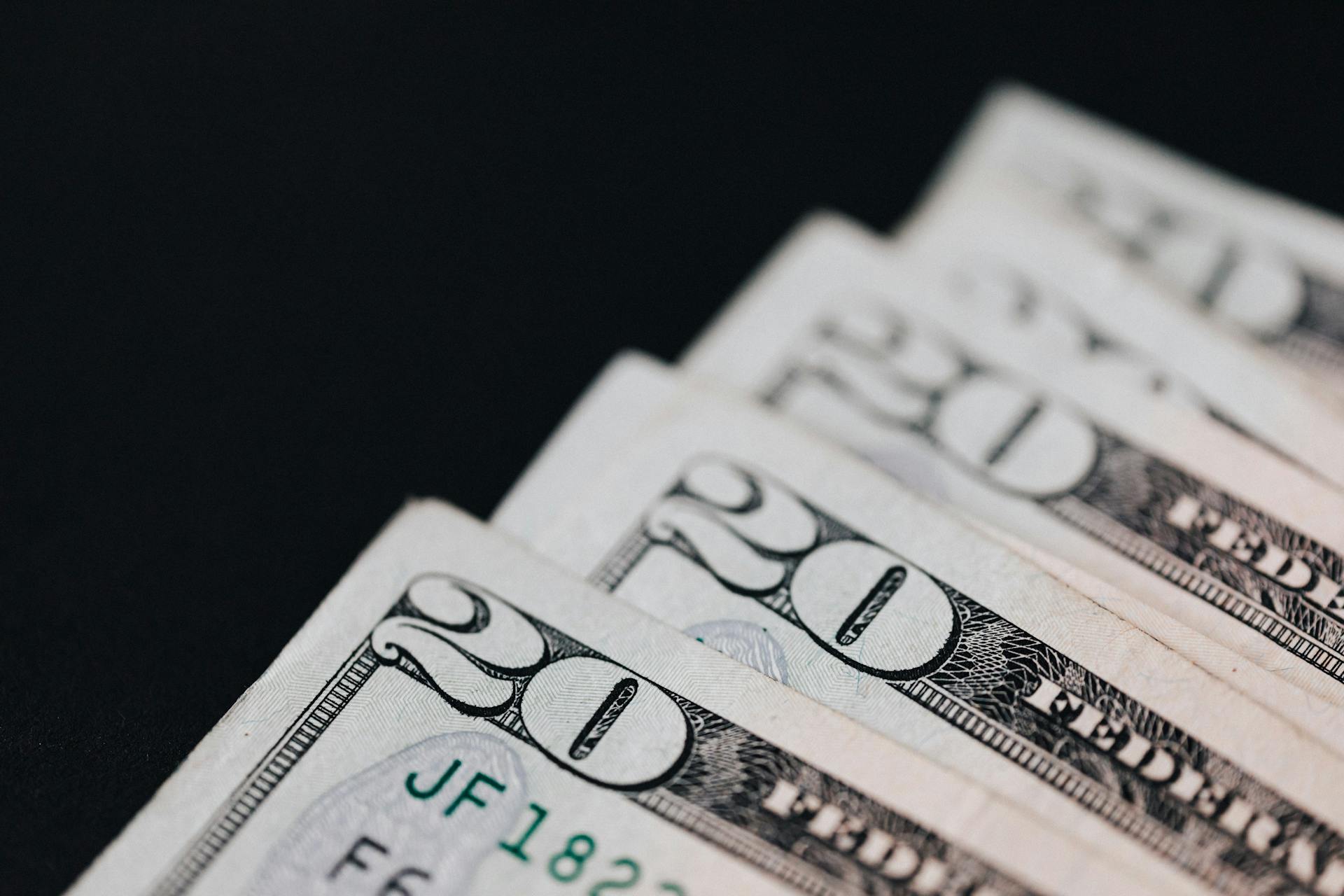
The US is slowly but surely moving towards issuing a Central Bank Digital Currency (CBDC). In fact, a 2022 survey found that 75% of central banks globally are already exploring or planning to launch a CBDC. This is a significant shift, and we'll explore the implications in this article.
The US Federal Reserve has been actively researching CBDCs since 2019, with a focus on understanding the benefits and risks of such a currency. According to a 2020 report, the Fed is considering a CBDC as a way to improve the efficiency of financial transactions and reduce costs.
The potential impact of a CBDC on the US economy is significant. If implemented, it could lead to increased financial inclusion, reduced transaction costs, and improved monetary policy effectiveness.
U.S. Treasury Role and Authority
The U.S. Treasury's role in issuing currency is a bit more complicated than you'd think. The Treasury has authority over U.S. currency, but it's not clear if it has the power to issue a digital currency.
The Secretary of the Treasury can mint and issue coins, but only those specifically described by statute. This includes platinum bullion coins, which the Secretary can mint and issue in various specifications and designs.
The Treasury's authority is limited to physical coins, not digital currency. The Secretary can only mint coins described by statute, such as a dollar coin that is 1.043 inches in diameter.
The Treasury's assent is required if the Federal Reserve wants to issue a digital currency. After the Federal Reserve orders banknotes from the Treasury's Bureau of Engraving and Printing, the notes are delivered to the Federal Reserve subject to the order of the Secretary of the Treasury.
The Federal Reserve can't produce a digital currency without the Treasury's approval. According to the Coinage Act of 1965, the Secretary of the Treasury has the final say over the delivery of notes to the Federal Reserve.
Worth a look: New Euro Currency Notes
Digital Dollar Development
The Federal Reserve is currently studying the potential benefits of a digital dollar, with a focus on expanding consumer access to the financial system and supporting faster and cheaper payments.
The Fed is exploring a unified system for tracking payments and deposits, which could eliminate the need for intermediary banks and reduce transaction times.
In theory, a digital dollar would move all digital transactions to a single ledger, allowing payments to clear instantly.
According to a 2021 survey by the Federal Deposit Insurance Corporation, 4.5% of U.S. households are "unbanked", meaning they don't have access to digital payment systems like Apple Pay and Venmo.
Fed digital dollar accounts could be structured to have no fees and no minimum balances, potentially granting digital banking access to all Americans.
The government could also use a digital dollar to make it easier to adjust monetary policy, such as depositing economic stimulus payments directly into citizens' accounts.
Paul Farella, managing director of registered investment advisor Willow, believes a digital dollar could make the job of the Internal Revenue Service cheaper and more efficient.
The Fed is still evaluating the potential impact of a digital dollar and has several studies, pilot tests, and experiments underway.
Nicholas Juhle, chief investment officer at Greenleaf Trust, thinks the transition to a digital dollar would be extremely complicated and likely won't happen anytime soon.
The government would need to make sure the transition is smooth to avoid destabilizing the entire global financial system.
In fact, Juhle believes the U.S. will eventually issue a digital dollar, but it's likely to be years away from happening.
Additional reading: Us Government Digital Currency
Benefits and Drawbacks
The idea of a digital dollar is gaining traction, and it's essential to consider both the benefits and drawbacks. A digital dollar could grant digital banking access to all Americans, potentially reaching the 4.5% of U.S. households that are currently unbanked.
A digital dollar could also reduce or eliminate transaction fees, making it a more cost-effective option for users. Payment companies charge fees for each transaction, and a digital dollar could change that.
On the government's side, a digital dollar could make it easier to adjust monetary policy. For example, economic stimulus payments could be deposited instantly into every American's digital dollar accounts. The government could also process and return taxes, benefits, refunds, and so on with ease, saving taxpayers dollars and time.
However, critics of a digital dollar say it would hand too much power to the U.S. government. They contend that it would open the door for the Federal Reserve to more tightly control how Americans spend and save their money.
Benefits of a Dollar
A digital dollar could grant access to digital banking for all Americans, including the 4.5% of households that are currently "unbanked" and lack access to services like Apple Pay and Venmo.
The potential to reduce or eliminate transaction fees is another advantage of a digital dollar. Payment companies charge fees for each transaction, but a digital dollar could change that.
Instant payment clearing is another benefit of a digital dollar. Payments would move instantly, no matter where they're coming from or going to.
A digital dollar would be accepted everywhere that accepts the regular dollar, eliminating the need to check if a company or person accepts a certain credit card or uses a certain payment app.
The government could also use a digital dollar to make monetary policy adjustments more easily. For example, stimulus payments could be deposited directly into American's digital dollar accounts instantly.
This could also make tax processing and returns more efficient, saving taxpayers time and money.
Downsides of a Dollar
A digital dollar could give the government too much control over our finances. Critics argue that it would allow the Federal Reserve to dictate how we spend and save our money.
The government could potentially restrict access to funds or credit, which would be a major concern for many people. They could also implement negative interest rates on cash, making it less appealing to hold onto physical money.
Critics also worry that a digital dollar would enable the government to collect taxes automatically. This could be a significant burden for individuals and businesses alike.
Adam Jordan, a financial expert, notes that the government is drawn to the tracking and control aspects of a digital dollar. This is a key concern for those who value their financial independence.
A unique perspective: Electronic Currency Types
Why a Digital Dollar?
A digital dollar could be a game-changer for everyday people, increasing financial inclusion and fixing flaws in current payments systems.
The current system can be slow and costly, with transfers between U.S.-based bank accounts taking days and international transfers even longer.
Credit and debit card transactions also don't settle for days and come with significant fees for merchants.
Having a digital dollar could grant universal access to the banking sector and quickly facilitate the distribution of paychecks and government funds.
This could reduce the need for costly bank workarounds like check cashing and payday loans.
President Biden's signed Executive Order 14067 in March 2022 directed the Federal Reserve to begin exploring the possibility of adopting a digital dollar.
The status quo is not an option, and a digital dollar is a step towards preserving the role of money as a public good.
Community banks and credit unions provide consumer protections, federal backing, and customer service that big tech companies often lack.
Check this out: Us Currency Credit Card Canada
What Is a Dollar?
A dollar is a form of legal tender in the U.S. that can be used to purchase goods and services and settle outstanding debts.
In its physical form, a dollar is a paper banknote, but a digital dollar would exist only in virtual form, stored and exchanged online via computer networks.
The use of physical cash is being replaced by digital transactions, and transactions using a digital dollar would be very different because it would be a direct liability of the Federal Reserve, rather than a commercial bank or another financial institution.
In fact, a digital dollar would be accepted everywhere that accepts the regular dollar, meaning there would be no need to determine if a company or person accepts a certain credit card or uses a certain payment app.
The government could easily process and return taxes, benefits, refunds, and so on with ease, saving taxpayers dollars and time, according to Paul Farella, managing director of registered investment advisor Willow.
US Central Bank Currency
The US Central Bank Currency is a topic of great interest, and it's essential to understand the potential benefits and challenges of implementing a Central Bank Digital Currency (CBDC).
A CBDC could increase financial inclusion and fix flaws in current payments systems, reducing the need for costly bank workarounds like check cashing and payday loans. This is because a CBDC could grant universal access to the banking sector and quickly facilitate the distribution of paychecks and government funds.
If this caught your attention, see: The Bank United States One Thousand
The Fed is still evaluating the potential impact of a digital dollar, with several studies, pilot tests, and experiments underway to determine the technology's opportunities and limitations. It's unlikely that Americans will form a consensus for or against a digital dollar until they get a sense of the structure of a U.S. CBDC and how much of an impact, if any, it would have on the average American.
Here are some key terms related to CBDCs and digital currencies:
- FedNow: A payments service centralized under the Federal Reserve that the Federal Reserve launched in late July 2023 to help banks and credit unions transfer funds to their customers.
- Bitcoin: The world’s first and largest cryptocurrency by market capitalization.
- Blockchain: A shared, immutable ledger technology used for trustworthy record-keeping of data (e.g. transactions) without a centralized third party.
- Central Bank Digital Currency (CBDC): Electronic or digital means of exchange that is established, issued, and controlled directly by a central bank, i.e., the Federal Reserve.
- Digital currency: Money that exists purely in digital form and is sent electronically over the Internet.
Why Should Central Banks Offer Currencies?
Central banks should offer digital currencies because the private sector's activity in this area is becoming a concern.
The status quo is not an option, and the potential encroachment of private digital currencies is a major reason why central banks need to step in.
Having central banks issue digital currencies can help preserve the role of money as a public good.
A U.S. digital currency could provide benefits to everyday people, including increased financial inclusion.
A different take: What Are Digital Currencies
Transferring money between U.S.-based bank accounts can take days, and the process can be even longer when crossing international borders.
CBDCs could grant universal access to the banking sector and quickly facilitate the distribution of paychecks and government funds.
It's getting harder for community banks to compete with big tech companies that can afford to spend billions on marketing and technology.
Championing
Brainard has been pushing the Fed to move on a digital currency for years, but there was little urgency from others at the Fed or in Congress. The COVID-19 pandemic made paper notes anathema to many Americans, changing that.
The Facebook Libra project, now known as Diem, showed lawmakers and central bankers the potential for a private company to step in and fill the void by effectively minting its own currency.
Stablecoins, unregulated digital currencies created by private companies that purport to represent dollars, have become a significant worry for lawmakers. They are completely unregulated, which makes them a concern.
The US is facing a world in which it may not control or even lead the world’s payment systems. This is due to rival countries seeking to seize leadership and a public that is moving further away from physical currency.
For more insights, see: Us Dollar vs World Currency
US Central Bank Currency
The US Central Bank Currency is a topic of great interest and debate. Central banks, like the Federal Reserve, are considering issuing digital currencies to replace traditional paper money. This is partly in response to the rise of private digital currencies like cryptocurrency and stablecoins, which can be volatile and unregulated.
These private digital currencies have raised concerns among regulators, as they can fluctuate wildly in value or even lose their value altogether. In contrast, a central bank digital currency (CBDC) would be backed by the government and subject to strict regulations.
A CBDC could provide several benefits to everyday people, including increased financial inclusion and faster payment processing. For example, transferring money between US-based bank accounts can take days, but a CBDC could facilitate instant transfers. This could also reduce the need for costly bank workarounds like check cashing and payday loans.
The Federal Reserve is still evaluating the potential impact of a digital dollar and has several studies and pilot tests underway. However, it's unlikely that Americans will form a consensus for or against a digital dollar until they understand the structure of a US CBDC and its potential impact.
Recommended read: Order Foreign Currency Us Bank
Some experts believe that a digital dollar could be a public-private hybrid currency, where the Fed works with private companies to develop the technology. However, others warn that the transition to a digital dollar would be extremely complicated and could destabilize the global financial system.
Here are some key terms related to CBDCs:
- FedNow: A payments service centralized under the Federal Reserve that helps banks and credit unions transfer funds to their customers.
- Bitcoin: The world's first and largest cryptocurrency, which is decentralized and not controlled by a central bank.
- Blockchain: A shared, immutable ledger technology used for trustworthy record-keeping of data without a centralized third party.
- Central Bank Digital Currency (CBDC): Electronic or digital means of exchange established, issued, and controlled directly by a central bank.
- Digital currency: Money that exists purely in digital form and is sent electronically over the Internet.
- Fiat: Government-issued currency like the US dollar that is not backed by a commodity.
- Stablecoin: A type of digital asset that maintains stable value by tying it to another asset, such as gold or the US dollar.
- Universal CBDC: A stablecoin or digital form of currency that relies on a central bank for infrastructure.
What's Holding the U.S. Back?
The US is still a long way from issuing a CBDC, and one of the main reasons is the lack of a clear regulatory framework.
Many experts agree that the US government needs to establish a clear regulatory framework for digital currencies, which is currently a major hurdle.
The US Federal Reserve has been studying the potential benefits and risks of a CBDC, but it's still unclear what specific laws and regulations would govern its use.
The existing laws and regulations for traditional currency are not directly applicable to digital currencies, which creates a lot of uncertainty.
See what others are reading: Alternative Currencies
The US government has been slow to act on this issue, which has given other countries, like China, a head start in developing their own CBDCs.
The lack of a clear regulatory framework is not the only challenge facing the US, but it's a major one that needs to be addressed before a CBDC can be issued.
Frequently Asked Questions
Will CBDC replace cash?
CBDCs will not replace cash, but rather exist alongside it as an additional option. However, central banks have hinted that a decline in cash usage could be a factor in their decision to introduce a CBDC.
Sources
- https://bpi.com/legal-authority-to-issue-a-u-s-central-bank-digital-currency/
- https://americafirstpolicy.com/issues/fact-sheet-central-bank-digital-currencies-cbdcs
- https://time.com/6099105/us-china-digital-currency-central-bank/
- https://www.forbes.com/advisor/investing/digital-dollar/
- https://hls.harvard.edu/today/establishing-a-us-central-bank-digital-currency-the-right-time-or-too-risky/
Featured Images: pexels.com


